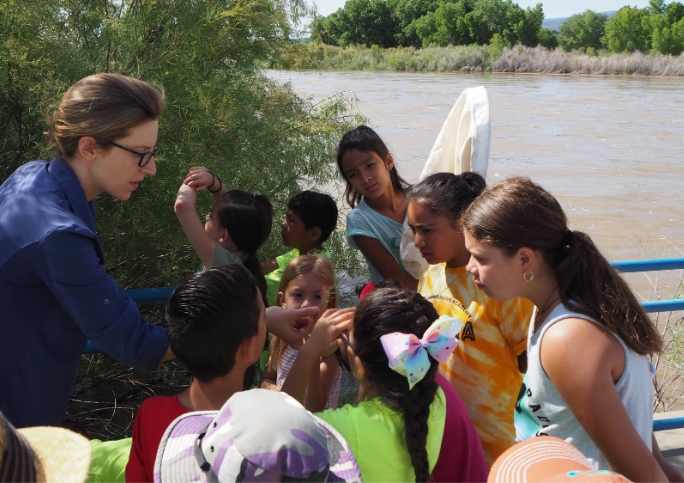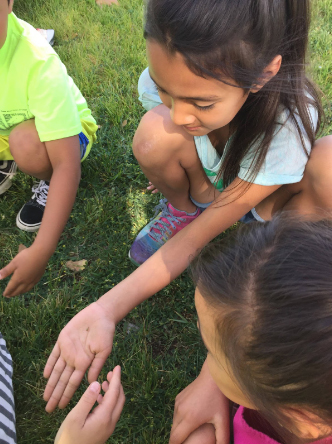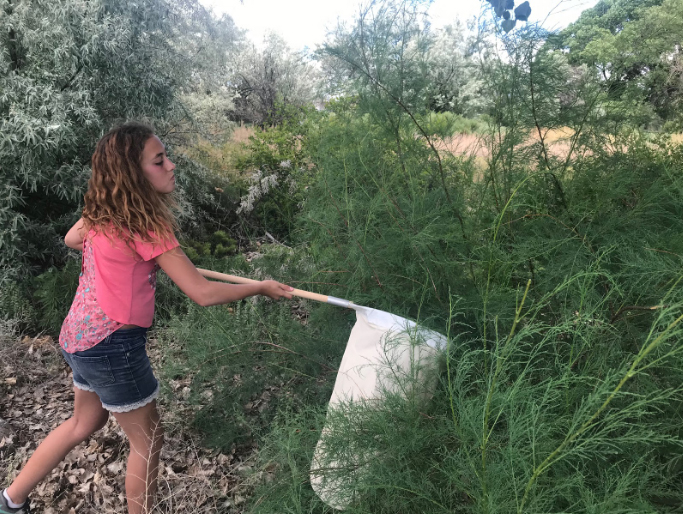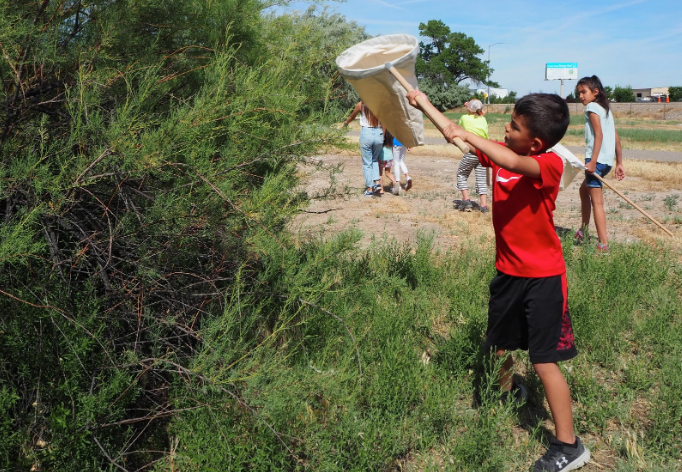To build the next generation of river stewards, RiversEdge West takes students to the Colorado River or brings a river education to the classroom.

Intro and Overview
RiversEdge West wants to promote and protect healthy riverside habitat by getting kids excited about it. Since the legendary Colorado and Gunnison Rivers run right through the nonprofit’s Mesa County home base, that means heading to the water. Taking classrooms down to stand on the sandy banks of their home rivers is a powerful recipe to create future river stewards.
“These young people will ultimately take over,” says the nonprofit’s Executive Director, Rusty Lloyd. RiversEdge West wants them to understand how rivers work and why they are important. Loyd also wants them to understand that they can help protect these wild places today and throughout their lives.

RiversEdge West has worked to restore habitat along western rivers for about fifteen years. “We’re really trying to hone in on the legacy and the stewardship of the projects we’ve been involved in,” says Lloyd. By working with professional decision-makers and practitioners, RiversEdge West helps river health today. By educating kids they’re setting rivers up for long-term success.
Educational Building Blocks
RiversEdge West worked with expert scientists and land managers to develop education programs for students of all ages, from elementary school to the university level. As a result, it’s able to tailor the materials and presentations to meet school district standards for each grade level.
Lessons can take place by the Colorado River or in the classroom. Lloyd describes the program as “connecting the community of youth to the river and integrating classroom projects with outdoor river curriculum.” Students learn about science topics, like how important healthy river flow rates are, the need for biodiversity, predator/prey relationships, and habitat health. They also learn a more foundational lesson – that individual actions make an impact.
Learning about Biological Control and Tamarisk Leaf Beetles
Students also have the opportunity to learn about biological control, also known as biocontrol. Biocontrol reduces pests species (whether plants, insects or animals) by reuniting them with a natural predator. For example, the tamarisk leaf beetle coevolved with tamarisk in Europe and Asia, where the non-native and invasive plant originates. The beetle eats the invasive plants’ leaves, stressing them and giving native plants a chance to compete.
In the spring and summer, students can practice monitoring tamarisk leaf beetle populations during riverside classroom sessions. If that sounds complicated, it’s not. It involves sweeping trees with bug nets to catch beetles and then counting them. What kid doesn’t like bug nets?

According to Cara Kukuraitis, RiversEdge West’s Outreach Coordinator, these days on the river really resonate with students. “I’ve had teachers come up to me saying that the most disengaged students were the most engaged that day,” says Kukuraitis. “It’s really cool because this one activity lets them connect to the river and the environment in a really powerful way.”
“After their first sweep or two, when they discover all the little insects and organisms living in the trees, they start to realize that this is something that they love doing,” says Kukuraitis. “You can see the progress throughout the day, from the kids being uncomfortable out there to be really comfortable and happy, which is really cool.”
But it’s not just the bugs that pull kids in. It’s understanding what weedy, invasives species can do to a river system. “When I look at kids’ faces when I show them before and after photos of a restoration project and it clicks, in that moment they realize how important this work is,” says Kukuraitis. “You see them beginning to understand the ecosystem wide-way that it alters the river.”

It Takes A Village
RiversEdge West’s education programs have many supporters, including the Xcel Energy Foundation, Alpine Bank and Forever Our Rivers Foundation. Pooling resources helps to ensure a lasting impact and Forever Our Rivers is proud of its contribution.
“Funding from Forever Our Rivers Foundation allowed RiversEdge West to expand our river education program and engage an additional 350 students to learn about the importance of our Western rivers,” says Lloyd. “This helped us accomplish a critical piece of our mission, to inspire and educate the next generation of river stewards.”
